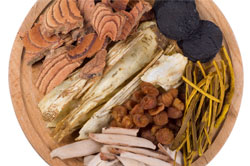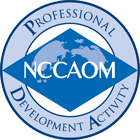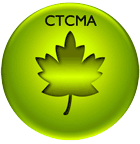Safety in Herb-Drug Interactions, #1
Course Excerpt
Download the course, complete the online quiz, and receive immediate acupuncture license credit! This course is written by Prof. RIchard Liao, L.Ac.; Kevin Walker, L.Ac., R.Ph. (Registered Pharmacist); and Adam White, L.Ac. .
Participants review herb-drug interactions including contraindications, cautions, and benefits of using herbal medicine when patients are taking prescription drugs. Participants are familiarized with pharmacodynamics, pharmacokinetics, and also the additive, synergistic, and antagonistic interactions of herbs with drugs. This is presented with simple and clear definitions, straightforward descriptions, individual herb and drug analyses, and case histories.
About Prof. Liao:
Professor Liao, L.Ac., Dipl.Ac., has served as professor of herbology and acupuncture theory at the Academy of Chinese Culture & Health Sciences in Oakland, CA. Prof. Liao has also served as faculty at Five Branches University in Santa Cruz, CA. His many years of teaching experience bring the highest quality of interesting and useful courses to HealthCMI continuing education online.
Sample of Course Material:
Herb-Drug Interaction Overview
Drug interactions are both pharmacodynamic and pharmacokinetic. Pharmacodynamics concern the actions of two or more drugs and pharmacokinetics concern the absorption, distribution, metabolism, and/or excretion of one or more drugs affecting another. Interactions can be additive, synergistic, and antagonistic. Additive interactions are those wherein the effects of two or more chemicals taken together is equal to the sum of taking them separately. Synergistic interactions occur when taking two or more substances together results in a stronger action than the sum of taking them separately. The substances increase each others’ effects. Antagonistic interactions are when taking substances together weakens their overall effect.
Chinese Medicine (CM) uses differential diagnosis in determining the appropriate herbs. Herbal choices are based on the functions of the individual herbs and the overall function of a formula. When patients consume western medications with herbs, care must be taken not to alter the effects of the western medicine such that adverse reactions occur. This can happen when the herbal medicine is additive, synergistic, or antagonistic to the effects of the medication. If, however, the medication is of insufficient strength, herbal medicine can potentiate its effects for a better clinical outcome. Herbal medicines are commonly used to protect the patient from the side effects of western medications and to holistically balance the patient’s constitution. In general, caution is needed more often in cases of excess rather than deficiency.
Herbal toxicity and herb-drug interactions have not surfaced as a major issue in the USA partially because the list of FDA allowable herbs is highly restricted such that most available herbs do not have harmful reactions with pharmaceuticals. The most common herb-drug interaction concern is that of warfarin (Coumadin). One concern is that herbal medicines may compete with warfarin for absorption. Commonly, the issue is to what extent and which herbs may decrease or increase the efficacy of warfarin. For example, herbs containing vitamin K may be antagonistic and blood invigorating herbs tend to be additive or synergistic.
Herb-drug interactions are not the only concern. There are food-drug interactions and food-herb interactions. Dietary irregularities often complicate treatment. In the case of a patient who consistently drinks excess amounts of coffee and refuses to curb this behavior, the properties of the coffee affect the usage of herbs- particularly those that raise the Qi, strengthen the Yang, warm the interior, or dry dampness.
More samples from the course....
1. Allergy Medications and Release Surface Herbs
Allergy drugs suppress allergic reactions and often have an astringent property whereas acrid and warm herbs commonly used in the treatment of allergies open the pores and release the wind.
Drug
Dimenhydrinate (Dramamine), cetirizine, loratadine, and chlorpheniramine are common over-the-counter antihistamines. Levocetirizine (Xyzal) and fexofenadine (Allegra) are prescription anti-histamines. Anti-histamines are distinguished by degrees of sedation and patients react differently to anti-histamines. Loratadine provides non-sedating, short-term symptomatic relief.
Herb
Ma Huang (Herba Ephedrae) opens the Lung, releases surface and encourages sweating. Ma Huang stimulates the central nervous system (CNS) and the cardiovascular system and therefore should not be combined with drugs of a similar nature such as ephedrine, pseudoephedrine (Sudafed), caffeine, and MAO inhibitors. Ma Huang may also reduce the effects of beta blockers such as metoprolol (Lopressor, Toprol) and propranolol (Inderal) because Ma Huang increases levels of norepinephrine.
Gui Zhi (Ramulus Cinnamomi Cassiae) warms the channels to release the surface and causes sweating.
Fang Feng (Radix Ledebouriellae Diaricatae) and Jing Jie (Schizonepetae Herba) release the surface and cause sweating. Jing Jie more strongly releases the surface and Fang Feng treats internal wind and wind damp Bi pain. Fang Feng detoxifies the body from multiple substances including heavy metals in the bloodstream and overdoses of Fu Zi. Fang Feng is especially good as an antidote for arsenic poisoning.
Chan Tui (Periosticum Cicadae) is physically light-weight and expels the wind. Its light-weight characteristic is reflected in its ability to act quickly. Chan Tui may aggravate chronic Yin deficient skin conditions. Chan Tui may induce drowsiness and is a central nervous system (CNS) suppressant. Therefore, use caution when combining with allergy drugs that also induce drowsiness. Chan Tui is anti-spasmodic and tranquilizing but may also impair labor and should therefore be used with caution in pregnant women. From a Chinese Medicine perspective, Chan Tui stops spasms & convulsions due to internal wind. For pregnant women with deficiency, Chan Tui must be used with caution. Therefore, be sure to have a clear diagnosis and limit the dosage where appropriate.
Sheng Ma (Cimicifugae Rhizoma) lifts the Qi and encourages the Qi to the surface from the interior to the exterior. It treats wind-heat rashes, itching, and incomplete expression of measles.
Case I
A 54 year old male patient has had a skin rash for years. He is under a great deal of stress, wakes early in the morning, and takes Loratadine. He has a red tongue with a dry coating and a small, wiry, and rapid pulse.
Diagnosis:
Heart and Liver Yin deficiency with deficiency heat and Qi stagnation.
Treatment:
a. Pushing the Rash Outwards by Releasing the Surface
Fang Feng (Radix Ledebouriellae Diaricatae), Jing Jie (Schizonepetae Herba) and Chan Tui (Periosticum Cicadae) worsens the skin rash.
b. Cool Heat and Benefit Yin to Eliminate Rash
Sheng Di Huang (Radix Rehmanniaea Galutinosae), Xuan Shen (Radix scrophulariae Ningpoensis), Zhi Mu (Rhizoma Anemarrhenae Asphodeloidis) and Mu Dan Pi (Cortex Moutan Radicis) eliminates the rash by cooling internal heat and benefitting the Yin.
Remarks:
Treatment (a) fails because it pushes the rash outwardly and also depletes the Yin. Treatment (b) succeeds because the rash is eliminated by following the differential diagnosis and therefore protecting the Yin. Although Chan Tui may cause drowsiness with many allergy medications, Loratadine is not a concern in this regard because it does not cause drowsiness.
Case II
A 43 year old female patient has chicken pox. During the first two weeks she took cetirizine and the chicken pox rash persisted but did not fully express. The tongue is puffy with a white coating and the pulse is floating and slippery.
Diagnosis: Wind damp heat attack.
Treatment:
Fang Feng (Radix Ledebouriellae Diaricatae), Jing Jie (Schizonepetae Herba,) and Niu Ban Zi (Fructus Arctii Lappae). The chicken pox expressed after taking the herbs and began diminishing within two days. Fang Feng and Jing Jie encourage wind dampness to the surface to release damp toxins and Niu Ban Zi releases the surface and clears heat toxins.
Remarks:
The patient had an acute external wind damp attack and used anti-histamines which suppressed and trapped the evil within the body. The anti-histamines did not allow the pathogens to release outwardly. Release surface herbs pushed the pathogens out of body and therefore the chicken pox released and expressed properly.
2. Antibiotics, Laxatives, and Antiviral Drugs combined with Clear Heat Toxins, Cool the Blood and Purging Herbs
Antibiotics have a very bitter taste and clear heat toxins but damage the Spleen and Stomach Qi. It may cause diarrhea to use both western antibiotics with Chinese herbs that have antibiotic effects.
Drug
Common western antibiotics and uses
Community-acquired pneumonia: azithromycin, doxycycline
Urinary tract infection: nitrofurantoin, ciprofloxacin
Trichomonas: metronidazole
Herb
Sheng Di Huang (Radix Rehmanniaea Galutinosae) cools and nourishes the blood and has a sticky quality that can cause damp stagnation in the Middle Jiao. Sheng Di Huang is contraindicated in patients with diarrhea, abdominal fullness, and Spleen and Stomach Qi and Yang deficiency. Use with caution when patients are taking antibiotics since antibiotics may cause these disorders.
Ku Shen (Radix Sophorae flavescentis) has a bitter taste and may damage the Spleen Qi. It strongly clears damp heat toxins from the skin.
Niu Bang Zi (Fructus Arctii Lappae) clears heat toxin sore throats and is bitter. It is a seed and may cause loose stool.
Long Dan Cao (Radix Gentianae Longdancao) clears Liver and GB damp heat, has a very bitter taste and may damage the Spleen Qi. In larger dosages, Long Dan Cao may induce drowsiness therefore use caution when a patient takes medications that cause drowsiness.
Zhi Zi (Fructus Gardeniae aJasminoidis) clears heat toxins, cools the blood, mildly promotes blood circulation in the San Jiao and reduces Heart fire irritability. Zhi Zi has a sedative effect and should be used cautiously when patients are taking barbiturates as not to increase sleeping time.
Yu Xing Cao (Herba Cum Radice Houttuyniae Cordate) clears damp heat in the Lung and large dosages may cause diarrhea.
Yin Chen Hao (Herba Artemisiae Yinchenhao) clears Liver and GB damp heat jaundice and may cause diarrhea for patients with Spleen Qi deficiency. Yin Chen Hao has hepatoprotective properties.
Shan Dou Gen (Radix Sophorae Tonkinensis) strongly clears heat toxins from the throat and is very bitter indicating that it may cause diarrhea.
Da Huang (Radix Et Rhizoma Rhei) is purging, clears heat toxins, and promotes blood circulation. Da Huang has a broad spectrum antibiotic affect but must be used with caution in patients taking antibiotics as not to cause diarrhea. Da Huang has hepatoprotective and nephroprotective properties.
Mang Xiao (Natril Sulfas) is purging and softens hard stool. Mang Xiao is contraindicated during pregnancy. Mang Xiao is a very powerful purging herb and should not be used in patients with diarrhea due to antibiotic intake.
Fan Xie Ye (Sennae Folium)is used for treating difficulty with bowel movements characterized by tenesmus, bloating, and gas. This herb is physically light-weight as compared to Da Huang. Its light-weight character indicates that it acts quickly and on a more surface level whereas Da Huang acts more deeply and is more appropriate for pushing out deep obstructions.
Yu Li Ren (Pruni Semen) purges the bowels, lubricates large intestine Yin and promotes urination.
Case I
A 45 year old male patient had shingles and used the anti-viral drug valacyclovir (Valtrex) to treat the herpes zoster infection.
Tongue: red , yellow greasy coating
Pulse: wiry and full
Diagnosis: Liver and GB damp heat toxins
The use of the loose herb formula Long Dan Xie Gan Tang led to explosive diarrhea- at least ten times per day. The Long Dan Cao (Radix Gentianae Longdancao) and Zhi Zi (Fructus Gardeniae Jasminoidis) clear heat toxins but also damaged the Spleen Qi thereby contributing to the diarrhea. Also, Sheng Di Huang (Radix Rehmanniaea Galutinosae) is sticky and therefore creates damp stagnation in the Middle Jiao.
Remarks:
Lower the dosages of the aforementioned herbs and add warming herbs to benefit the Spleen. This will balance the formula and prevent diarrhea.
Case II
A 45 year old female has constipation and acute pneumonia. She takes the antibiotics azithromycin and doxycyline without therapeutic effect for two weeks. The treating MD has been a student of Chinese Medicine (CM) and knows that the Lung and Large Intestine are paired organs. He used Mang Xiao (Natril Sulfas) to cause the patient to have diarrhea four times on the day of the administration of the herb. The next day the fever was gone and the doctor continued the same antibiotics for one week and the patient recovered.
Remarks:
Chinese Medicine (CM) theory guided the doctor to combine Mang Xiao with the antibiotics based on a diagnosis of Yang Ming Fu Organ syndrome.
3. Diuretic Drugs with Promote Urination Herbs
Diuretic drugs and promote urination herbal medicines have similar functions therefore use caution with the dosage. Diuretic drugs and promote urination herbs may deplete Yin due to excessive drainage. In this case, combining drugs and herbs with additive and synergistic interactions may lead to a loss of fluids and electrolytes.
Drug
Common diuretics are furosemide (Lasix), chlorthalidone (Hygroton), and hydrochlorothiazide (Apo-Hydro, Aquazide H, Microzide). They strongly drain water and lower blood pressure but may drain potassium which creates the potential need for potassium supplementation to avoid harmful side effects. Furosemide is widely used for both the treatment of edema, hypertension, and congestive heart failure. Furosemide and many diuretics may cause dehydration and electrolyte depletion marked by a loss of potassium, calcium, sodium, and magnesium. Furosemide has an increased risk of causing electrolyte imbalances when combined with corticosteroids and an increased risk of kidney damage when combined with some antibiotics. Hydrochlorothiazide is commonly used to treat hypertension and congestive heart failure but is also used for the prevention of kidney stones.
Functionally, diuretics lower blood pressure by decreasing cardiac output and reducing plasma and extracellular fluid. The body responds to the diuretics with a homeostatic response that returns these levels to relatively normal or slightly less than normal. However, a reduction in peripheral vascular resistance persists and the blood pressure remains lower.
Herb
Fu Ling (Sclerotium Poriae Cocoa) and Zhu Ling (Sclerotium Polypori Unbellati) promote urination. Fu Ling is neutral and emphasizes balancing the water in the body. Zhu Ling is cooling and more strongly to promotes urination.
Ze Xie (Alismatis Rhizoma) promotes urination and drains Kidney excess and deficiency heat.
Che Qian Zi (Semen Plantaginis) promotes urination and drains Liver and GB damp heat.
Hua Shi (Talcum) promotes urination and sedates Qi level heat and Summer heat.
(Chuan) Mu Tong (Caulis Clematidis Armandii) strongly promotes urination, promotes lactation, and treats Bi pain by unblocking blood stagnation in the channels. Chuan Mu Tong treats damp-heat, bloody, and stone dysuria. Chuan Mu Tong contains no aristolochic acid and is therefore considered a safe herb for medicinal use. Guan Mu Tong (Caulis Aristolochiae Manshuriensis) is toxic because it contains aristolochic acid.
Qu Mai (Herba Dianthi) and Bian Xu (Herba Polygoni Avicularis) promote urination and drain Lower Jiao damp heat. Qu Mai emphasizes clearing heat more strongly than dampness. Bian Xu more strongly drains dampness.
Shi Wei (Folium Pyrossiae) promotes urination, clears damp heat and stops bleeding.
Dong Gua Ren (Dong Gua Zi) (Semen Benincasae Hispidae) drains Upper Jiao damp heat and dissolves phlegm.
Jin Qian Cao (Lysimachiae Herba) is one of classic herbs to move urinary stones.
Guang Fang Ji (Radix Aristolochiae Fangchi) is cold, bitter, and pungent. It promotes urination and expels wind damp Bi pain. Guang Fang Ji contains aristolochic acid and is therefore considered toxic and to be avoided. It is advised to use Fen Fang Ji (Radix Stephaniae Tetandrae) which is not toxic and is regarded as safe for medicinal use.
Yu Mi Xu (Maydis Stigma) promotes urination, clears Liver and GB damp heat, and treats edema including edema and dysuria due to nephritis. Yu Mi Xu contains vitamin K. Vitamin K plays a key role in blood coagulation and may block the blood thinning actions of anticoagulants such as warfarin (Coumadin).
End of course sample, more in actual course material.








